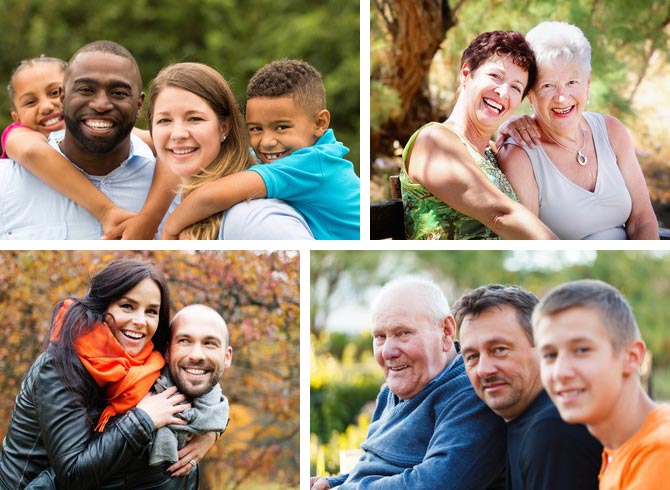Laughing and Learning Together: What is Family Learning?
“During childhood people develop a foundation for lifelong learning … family members play a vital role in helping children develop a joy for learning and an understanding that learning is a process, something that all children and adults do, all their lives.”
— From J.H. Falk & L.D. Dierking, Lessons without limit; How free-choice learning is transforming education
It is challenging to think of any two words more difficult to define as separate terms, let alone together, which only seems to complicate matters. However, since the way humans make sense of much of their world is through group interaction, conversations, gestures, emotions, and watching others, the notion of a family learning together does make sense. The very first learning group a person belongs to is her family and this group is so important that anthropologists, sociologists and social psychologists refer to the family as an educational institution, similar to a museum or school but without the bricks and mortar. Taking this approach, family learning is the learning that family members engage in over their lifetimes. The processes involved include social interaction, collaboration and sharing among members. Through conversations and observations of one another, knowledge and understanding is constructed by the family and this learning is incorporated into a family narrative, a set of shared meanings among and between family members. This interaction, collaboration and sharing can be direct (a family participating together in an activity or experience) or indirect (a family discussing or doing something together after an experience a child or adult has had elsewhere). Before proceeding further though I should define what I mean by the terms family and learning.
A Definition of Family
A google search of the phrase “family in the 21st Century” reveals an amazing array of responses and a variety of family types including links to working families, to “renaissance” Dads, to stepfamilies, blended families, adopted families, multi-birth families, home schooling/unschooling families and so on. The one conclusion that can be drawn from such introspection and research is that it is increasingly difficult for any one individual to define family. Thus I have chosen to use a fairly simple but broad definition: two or more people in a multi-generational group that has an ongoing relationship; they may be biologically related but not necessarily. In fact, the general rule is that if a group defines itself as a family they are one!

A Definition of Learning
In terms of learning, my notion is also very broad, including typical ideas such as learning facts and concepts, most often expressed in words. But the definition of learning and the family narrative also encompasses shifts in attitude, values, and beliefs, aesthetic understanding, and psychomotor skills such as understanding how to throw a pot or safely cook over an open fire. Learning also includes social/cultural dimensions such as learning about how your parents or a child learns, how to think critically and refine one’s learning skills and how to use the learning resources in a community to best advantage. All of these aspects, some of which are not easily expressed in words or other symbols, are important expressions of lifelong learning.
Specifically thinking about history, this broader definition of learning means that families learn history together best in multi-sensory ways that include engaging in activities such as preparing food or dressing up that immerse them in what it felt like to live at a particular time, listening to music of the time period, and discussing what they are experiencing in relationship to their own everyday lives. These activities provide a context for also learning about one another as learners and people, for example, how to support and facilitate one another’s interests, and modeling how to use a community’s learning resources.
Museums as Social Learning Spaces
Institutions like museums serve an overarching socio-cultural function by being inviting places in which people can explore and learn- in other words they foster and support a community of learners. Research shows that families use museums as a resource for their own learning, learning that is self-directed, voluntary and guided by the families’ needs and interests-learning referred to as free-choice learning (Falk & Dierking, 1998, 2001, 2002). People engage in free-choice learning throughout their lives to find out more about what they find useful, compelling or just plain interesting; family learning is a special form of free-choice learning. My research and that of others suggests that museums are important settings where families can spend quality time, ultimately, learning together and building and reinforcing their family narrative. Clearly though, this is an implicit not an explicit goal. As a colleague likes to quip, few families wake up on Saturday morning and say, “Hey, let’s go to the aquarium today and learn about teleost fish!” However, interviews with parents in museums demonstrate that they perceive these settings as “good places to take children to learn,” and several studies support the idea that families use museums as socially “mediated” learning environments (Chase, 1975). In one study, children indicated that they often prefer to visit museums with their families, rather than school groups, because they get to look at more things of interest to them personally and talk to their families about what they are doing and seeing (Jensen, 1994).
You may also like: The Learning Bond by Beverly Sheppard
In this transcript from the 2005 Family Learning Roundtable, museum consultant Beverly Sheppard describes the learning bond as both the setting and the unique nature of learning that occurs in the midst of our intergenerational family experience.
You may also like: Beverly Sheppard and Heather Nielson discuss designing experiences that support family learning in this YouTube video.
